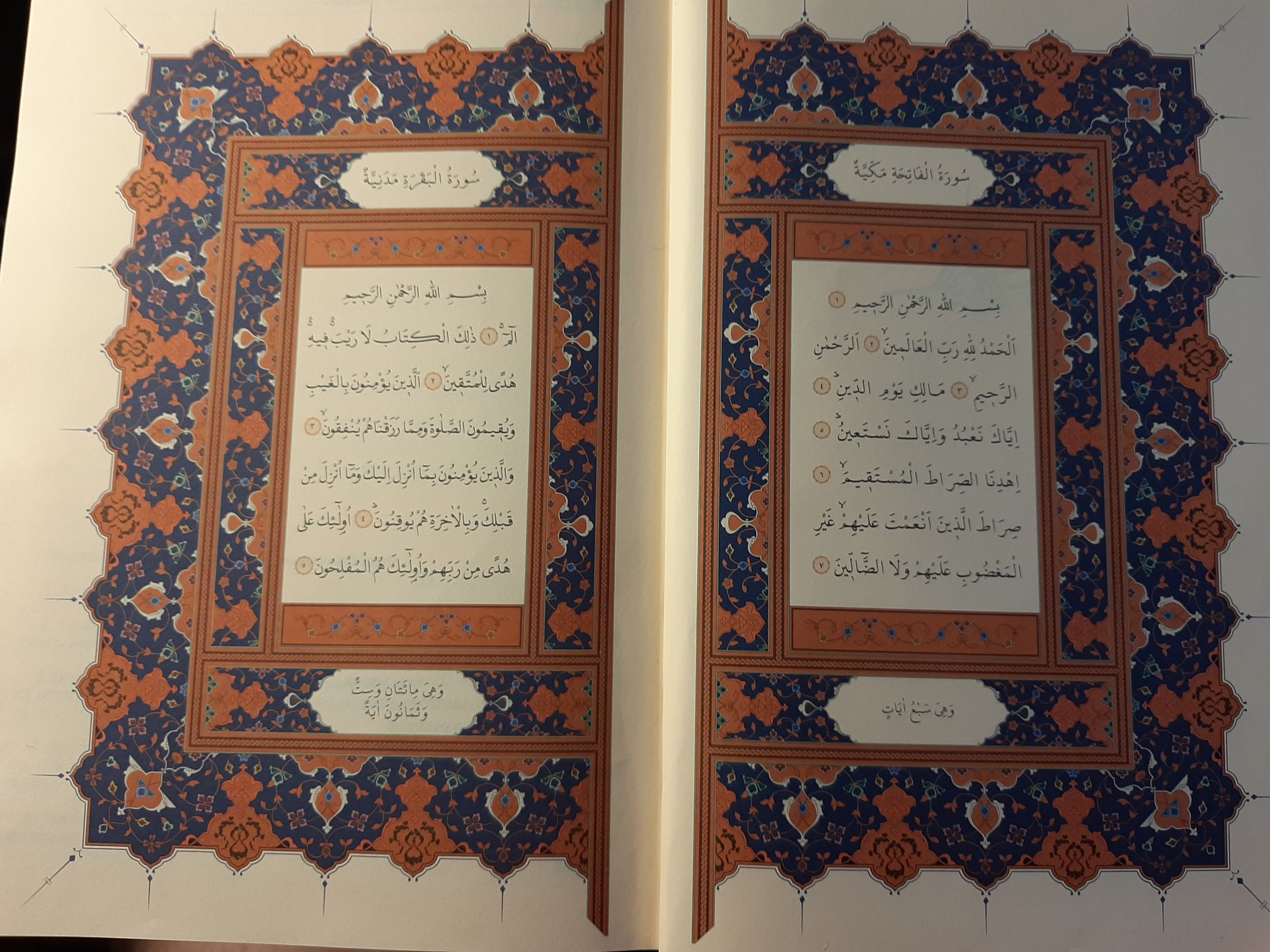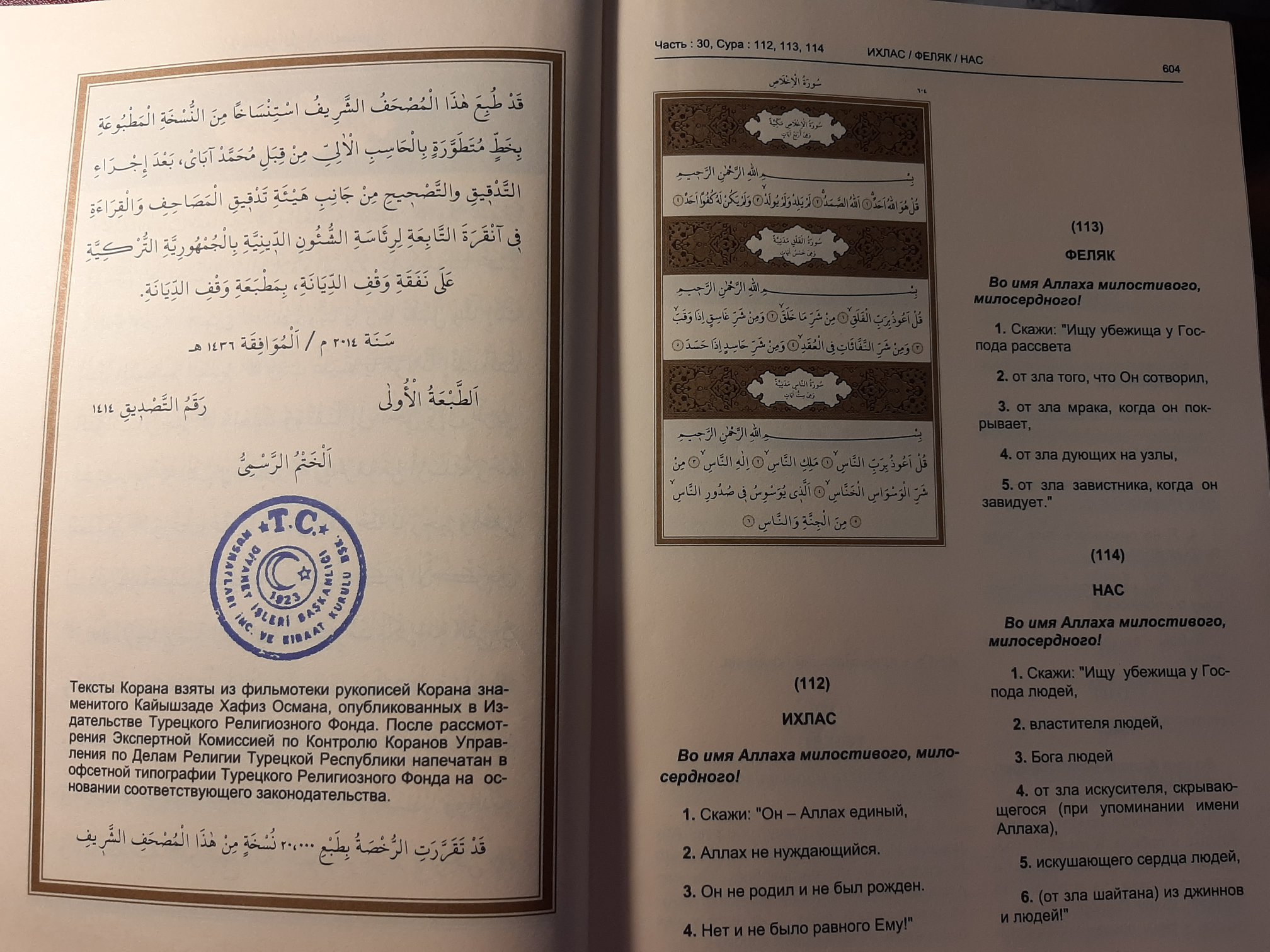The first appearance of “Koran: Perevod” (“The Qur’an: Translation”) by the Azerbaijani scholar Fazil Karaogly was at the beginning of the 90’s. This seems to be the second Russian translation published in Baku; the rendition by Kračkovskij was released there in 1991. After a decade, the translation received recognition from the Turkish Directorate of Religious Affairs (TDRA) and became a “standard” rendition into Russian.
More than 40,000 copies appeared in 2014 and 2016 (with Arabic text included) and were distributed widely by Turkish missions in Russia, Belarus and Ukraine. However, because it has never been published in any of these states, it has received little attention among readers.
An in-depth analysis of the text of the translation exposes the influence of already-existing Russian translations like the one by Krackovskij and, even more evident, the Turkish Kur’an-ı Kerim Açıklamalı Meali (Ali Özek et all). For instance, in 2:26 for Arabic al-haqq the translator provides “istina i dejstvitel’nost” (“truth and reality”), just as the Turkish text has “hak ve gerçek”. There are many other examples of borrowings from the Turkish translation, especially insertions.
The reason behind this is the wide popularity of “Kur’an-ı Kerim Açıklamalı Meali” from the early 1990’s. First published by Turkiye Diyanet Vakfi in 1982, five years later it was also issued by the King Fahd Qur’an Printing Complex (KFQPC) in Madinah, so this translation became not only the most accessible, but also seemed like a “canonical” interpretation. In his decisions on meanings, Fazil Karaogly seems to follow a mainstream Sunni approach. The explanations are given in brackets and cover general issues: references to persons, alternative meanings etc.
Nearly all of the names are preserved in Arabic transliteration (but sura names are written according to their Turkic pronunciation). Broadly speaking, the rendition consists of simple and short sentences. The traces of some artistic tools appear very rarely. What is more obvious is an extreme literality of translation. In some places, this really helps to provide an accurate meaning and, importantly, the actual order of Qur’anic wording.
However, for many suras, Karaogly’s translation is no more than a word-by-word construction, without any bridges for relaying the exact meanings of verses. The mix of archaic terms and modern colloquial words (desnica, “a hand”, sonm, “a gathering”; otstan’te, “take off”, soobŝenie, “a message”) also seems to be rather challenging.
Fazil Karaogly opts for the minimal usage of primary Arabic terms in his translation. For instance, words like salat and zakat are given in related explanations, not in the main text. In contrast to it, the word vazir (25:35) appears in transcription and is followed by a minor remark (“meaning a helper”). The same kind of transmission became evident in 4:4: the Arabic word mahr was explained as veno (the wedding ransom). The slightly problematic vocabulary in its target text (though reasonable overall), and the complete absence of commentaries, are two factors preventing this work from competing with other Russian translations.
Interestingly, it became a basis for the recent Polish interpretation by Musa Czachorowski, published with the support of TDRA (Bialystok, 2018). This has breathed new life into a work which did not experience much popularity before.
Mykhaylo Yakubovych



